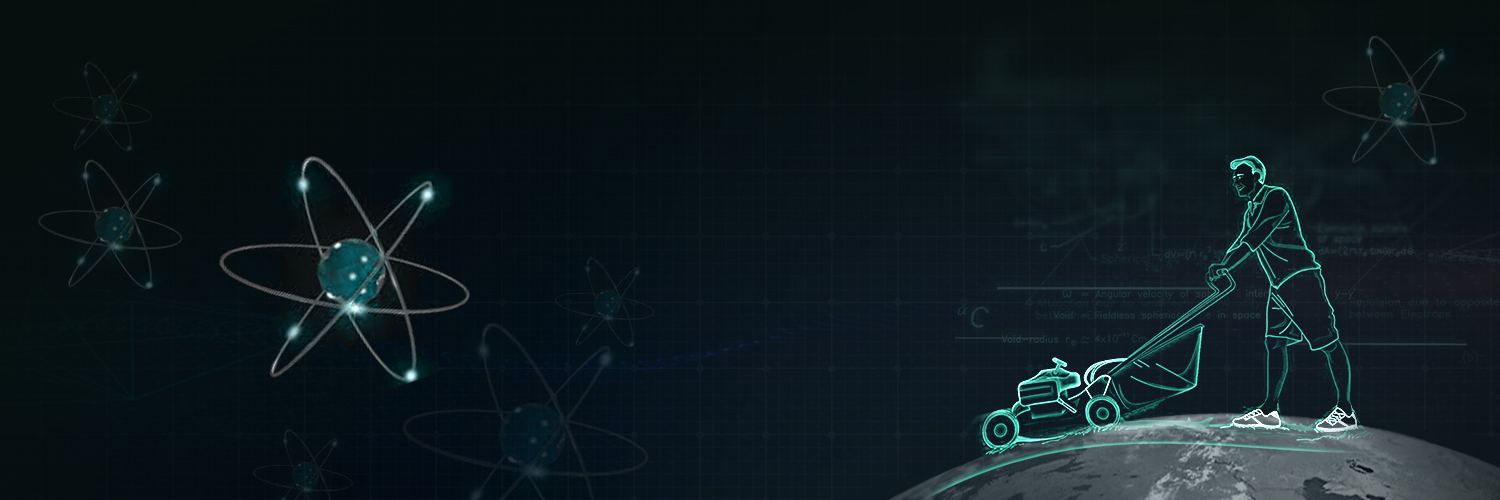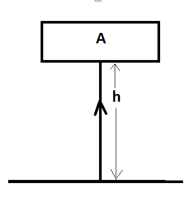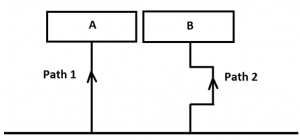KINETIC ENERGY
Kinetic energy of a body can be defined as, The energy possessed by a body by virtue of its motion or due to its motion.
Formula for Kinetic Energy
The kinetic energy of a moving body is measured by the amount of work it can be before coming to rest. Kinetic energy of a body with mass m and moving with velocity m is given by,
Kinetic energy or
where m is the mass and v is the velocity of the body.
Conclusions that can be drawn from the formula of kinetic energy are:
- The kinetic energy of a body is directly proportional to the mass of the body, and
- The kinetic energy of a body is directly proportional to the square of velocity of the body.
POTENTIAL ENERGY OR ENERGY OF AN OBJECT AT A HEIGHT
- Consider a bow and an arrow. When the bow is drawn, it stores some amount of energy, which gets converted to kinetic energy, when it is released. Similarly, when a spring is displaced from its equilibrium position, it gains some amount of energy in the form of stress felt in our hand upon stretching it. Such form of energy that results from the alteration of its position or state is termed as potential energy.
- Energy possessed by charges displaced from their equilibrium position are termed as electrostatic potential energy.
- Potential energy can be defined as the energy of a body due to its position or change in shape i.e. a body may possess energy even when it is not in motion.
- Formula for Potential Energy is given by:-
Where,
m = Mass of the object
g = Acceleration due to gravity
h = Height in meters
GRAVITATIONAL POTENTIAL ENERGY
The gravitational potential energy (P.E) of an object at a point above the ground is defined as the work done in raising it from the ground to that point against gravity.
The gravitational potential energy of an object of mass m raised through a height h above the earth’s surface is given by
Consider an object of mass m placed at a height h from the ground. The force required to raise the object is equal to of the object.
As the object is raised against the force of gravity, some amount of work (W) is done on it.
work done on object = force X displacement
So, W =m x g x h = mgh
As per the law of conservation of energy, since the work done on the object is equal to m x g x h ,
The energy gained by the object = m x g x h , which in this case is the potential energy E.
Thus, energy of an object raised to a height h above the ground is
E = m x g x h
Gravitational energy does not depend upon the distance travelled by the object, but the displacement i.e., the difference between the initial and the final height of the object. Hence, the path along which the object has reached the height is not taken into consideration.
OTHER TYPES OF ENERGY
Mechanical Energy:
- It is the sum of potential energy and kinetic energy that is the energy associated with the position and motion of an object respectively.
- Mechanical Energy = Kinetic Energy + Potential Energy
Solar Energy:
- It is the light and heat energy from the sun which is harnessed using technologies like, solar heating, photovoltaics, solar thermal energy, solar architecture and artificial photosynthesis.
- It is the prime source of renewable-energy.
Wind Energy:
- It is the energy present in the flow of wind which is used to drive wind turbines that is coupled to generator shaft to produce electrical energy.
- The kinetic energy of the wind is converted into mechanical power of turbine rotation.
- Wind energy is a major cheap source to produce electricity.
Geothermal Energy:
- It is the heat energy present inside the Earth.
- It is a cheap & convenient heat and power resource.
- Use of this clean source of energy does not cause harmful greenhouse gas emission etc.
Biomass Energy:
It is the energy produced from biomass which is organic matter obtained from living organisms.
Nuclear Energy:
- The energy present in the nucleus of an atom is known as nuclear energy.
- The particles of an atom are tiny and needs energy to hold themselves.
- Nuclear energy is the enormous energy in the bonds of an atom which helps to hold the atom together.
- Nuclear energy can be used to generate electricity.
Electrical Energy
- It is the energy caused by moving electric.
- Electric energy is a type of kinetic energy because the electrical charges
Tidal Energy:
Tidal energy or tidal power is a form of hydropower (energy present in water), which converts the energy present in the tides to produce electricity.
Thermal Energy:
- It is the energy obtained from heat.
- It is a microscopic, disordered equivalent of mechanical energy.


